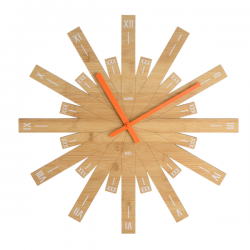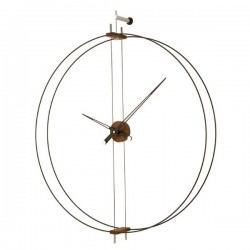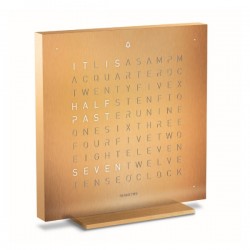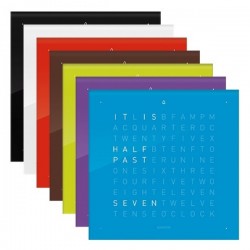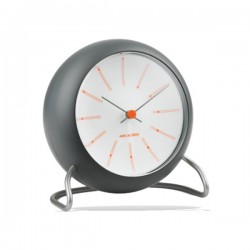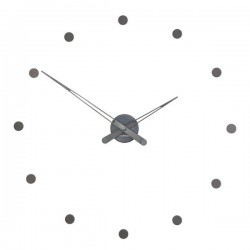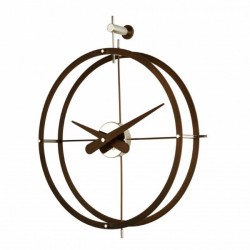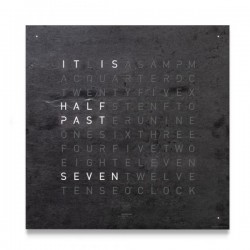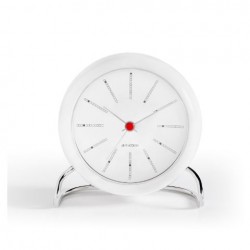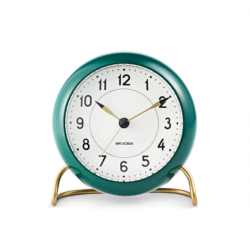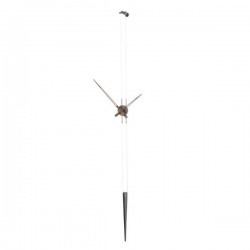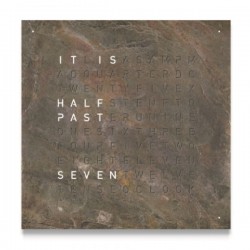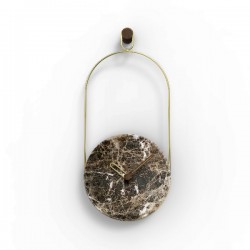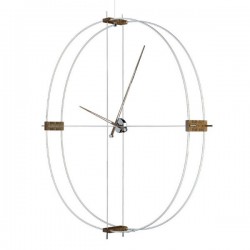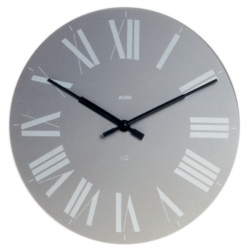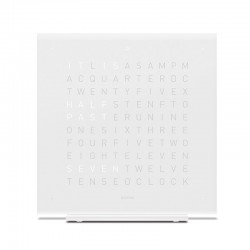Alessi Raggiante Wall Clock
“Raggiante”, radiant like the sun that illuminates and paces the day, is a wall clock by Michele De Lucchi.
The designer favours natural materials which transform, improve even, over time: for this object, he chose bamboo, giving rise to an industrial product that retains the characteristic features of an item that is a cross between art and handicraft.
Characteristics / Suggested use The sun ray shape of the clock is achieved by cutting and laser engraving bamboo wood.
The clock tells the time - hours and half-hours - in Roman numerals, distributed radially on the clock. The clock hands, in orange aluminium, stand out against the natural colour of wood.
The mechanism is quartz and it is powered by an AA battery The clock can be secured to the wall using the dedicated hole made on the rear support.
Wood is a natural material which is distinguished by grain patterns, knots and differences that make each object unique and different from the next: consequently slight variations in colour - between one piece and another and over time - should be considered completely normal.
- Specifications
Bamboo Wood
- Size Description
Diameter 48cm
-
Michele Delucchi
Michele De Lucchi started studying architecture at Padua University, switching to Florence University, where he took his diploma in 1975. For two years afterwards he taught architecture there as an academic assistant. In 1973 Michelle De Lucchi joined forces with other designers and architects to form Cavart, a radical design group. In 1978 Michele De Lucchi went to Milan to work for Kartell as a designer at Centrokappa, the proprietary Kartell design studio. After meeting the designer Ettore Sottsass, Michele De Lucchi joined the Studio Alchimia designers. For Studio Alchimia exhibitions, Michele De Lucchi came up with several bizarre and comical designer objects, including the 1978 "Sinerpica" table lamp, which was virtually useless as a lamp, as was "Sinvola" (1979), which looks like an outsize pincushion with a rod bearing a light bulb stuck through the middle. In 1979 Michele De Lucchi also designed several prototype household appliances, which were shown at the Milan Triennale but never produced. From 1980 Michele De Lucchi belonged to Memphis, the designer group around Ettore Sottsass. In 1982 Michele De Lucchi designed "Lido", a colorful sofa, and, in 1983, the "First" chair for Memphis. In the late 1980s, Michele De Lucchi again returned to good design, landing a bestseller in "Tolomeo", a clearcut, functional aluminium work lamp he co-designed with Giancarlo Fassina for Artemide in 1987. In 1990 Michele De Lucchi found a small business of his own for making lighting that was neither complex nor had to take into consideration the demands of mass production so it could be produced by craftsmen working in the traditional manner. The Michele De Lucchi milky white lamps "Fata" and "Fatina" of handblown Murano glass date from 2001. On the side, however, Michele De Lucchi continued to work with his design studio for large companies. Since 1979 he had been a design consultant for Olivetti. In 1993 Michele De Lucchi designed branches of Deutsche Bank, in 1995 a shop system for Mandarina Duck, and, in 1997, the Deutsche Bahn travel center in Frankfurt.


 EUR
EUR


